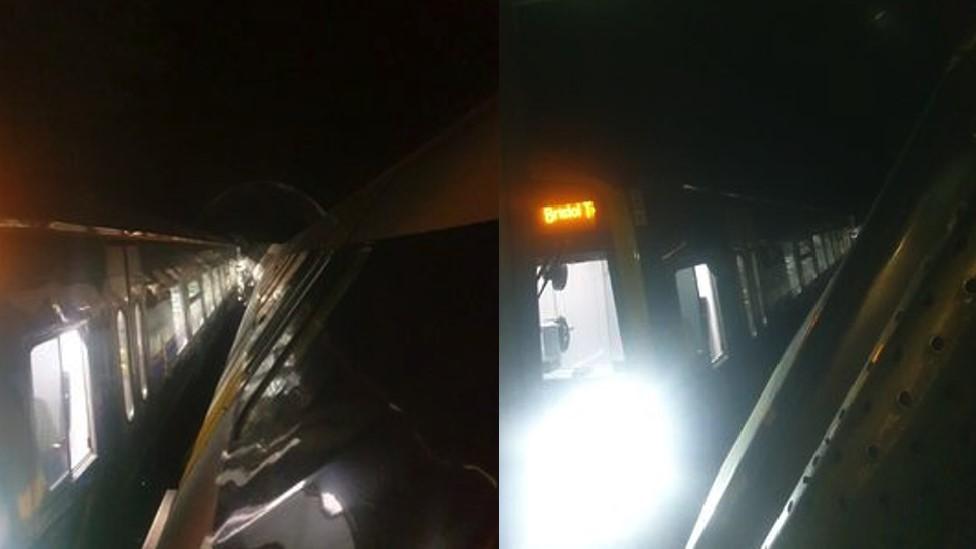Salisbury train crash: Driver acted impeccably, says operator
- Published

Robin Tandy was driving the South Western Railway train in the crash on Sunday
The driver of a train involved in a serious crash acted in an "impeccable way in a valiant attempt to keep passengers safe", the operator said.
South Western Railway (SWR) said driver Robin Tandy, 74, who was seriously injured in the collision in Salisbury, was a "deeply-respected colleague".
The SWR train ran 220 metres past a red stop signal before striking a Great Western Railway service on Sunday.
Investigators said "wheel slide" meant the train did not stop as it should.
A preliminary investigation said the Great Western Railway (GWR) service should have been protected by a red light at the junction before Fisherton Tunnel. But the SWR train went through the red after "low adhesion" caused it to slip through.
Mr Tandy, who has been driving services in the area for around 50 years, did apply the brakes, investigators said. He suffered "life-changing" injuries in the crash.
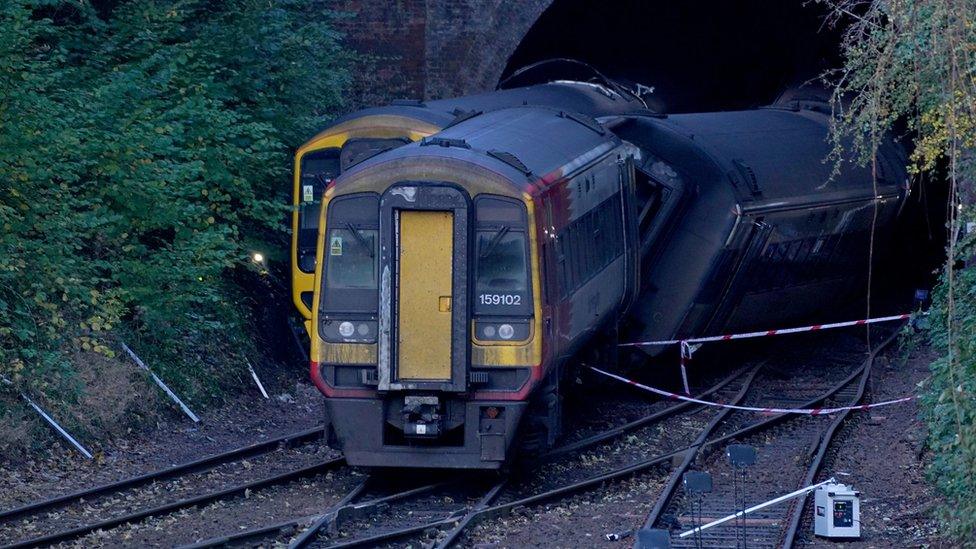
Mr Tandy is believed to have suffered "life-changing" injuries
SWR said in a statement that he has an "excellent professional track record" and "stayed at the controls throughout".
"We thank him for his actions and we wish him a speedy recovery as he continues to be treated in hospital," the operator added.
SWR said it hoped the early assessment by the Rail Accident Investigation Branch (RAIB), showing the driver reacted correctly to the signals, would help "stop speculation".
The RAIB confirmed preliminary analysis showed the driver initially applied service braking to slow the train before reaching the stop signal and that around 12 seconds after, he made an emergency brake demand.
This was followed by a second emergency brake demand made by the train protection and warning system.
Its investigation will look at the level of wheel to rail adhesion on the approach to the tunnel junction and also consider how Network Rail managed the risk of wheels slipping on rails where the accident happened, it said.
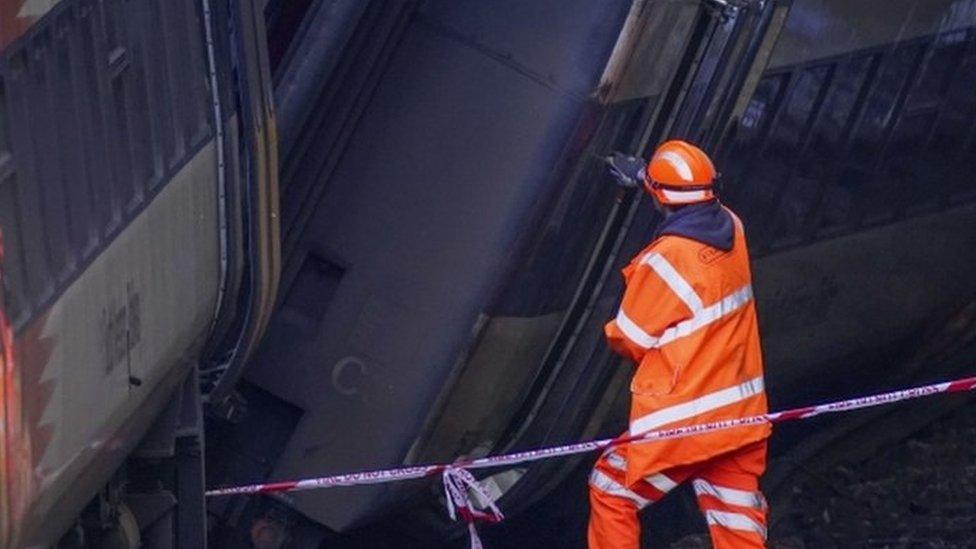
Staff from the Office of Road and Rail and the Rail Accident Investigation Branch have been examining the scene
South Western Railways policies towards low adhesion between the wheels and the track will also be analysed.
Meanwhile, work to remove wreckage at the scene of the crash is due to begin later.
Network Rail said it would bring in cranes to lift the wreckage, BBC South Transport Correspondent Paul Clifton said.
The SWR train was running from London to Honiton, in Devon, while the GWR service was travelling from Southampton to Cardiff when they collided at the tunnel.
Both trains had passed a Y-shaped junction, close to the entrance of the tunnel, before the collision.
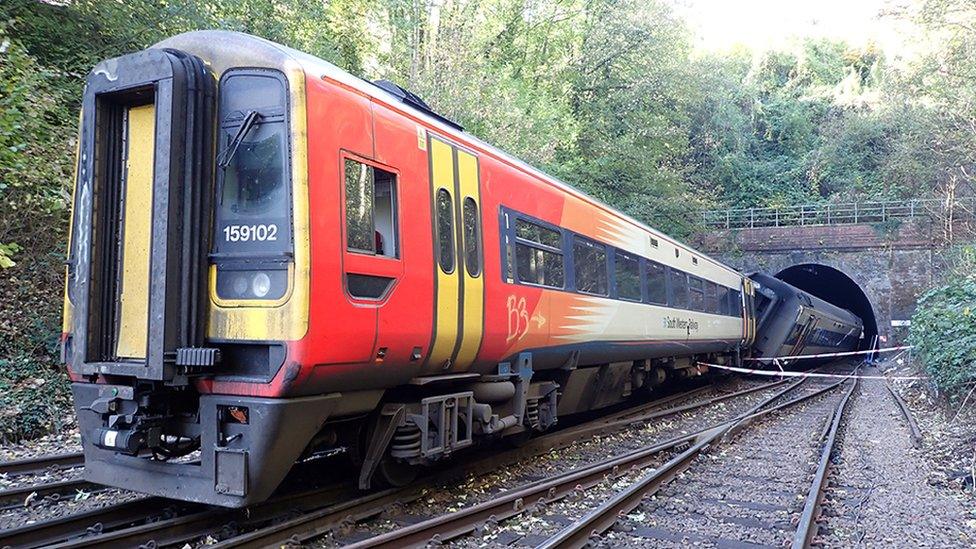
Investigators said further results would be made public later in the week.
The crash has caused major disruption, with lines through the city expected to remain closed until at least the end of Monday.
Of the 92 passengers on board the two trains, 14 required hospital treatment, with most suffering minor injuries.
The Rail Delivery Group said low adhesion can be caused, external by "moisture on the rail mixing with the film produced by 'leaves on the line' or other contaminants, such as rust or grease."
They add the problem can be worse in autumn and that "it can also cause safety risks, such as signals passed at danger and station overruns".


Follow BBC West on Facebook, external, Twitter, external and Instagram, external. Send your story ideas to: bristol@bbc.co.uk , external
- Published2 November 2021

- Published1 November 2021
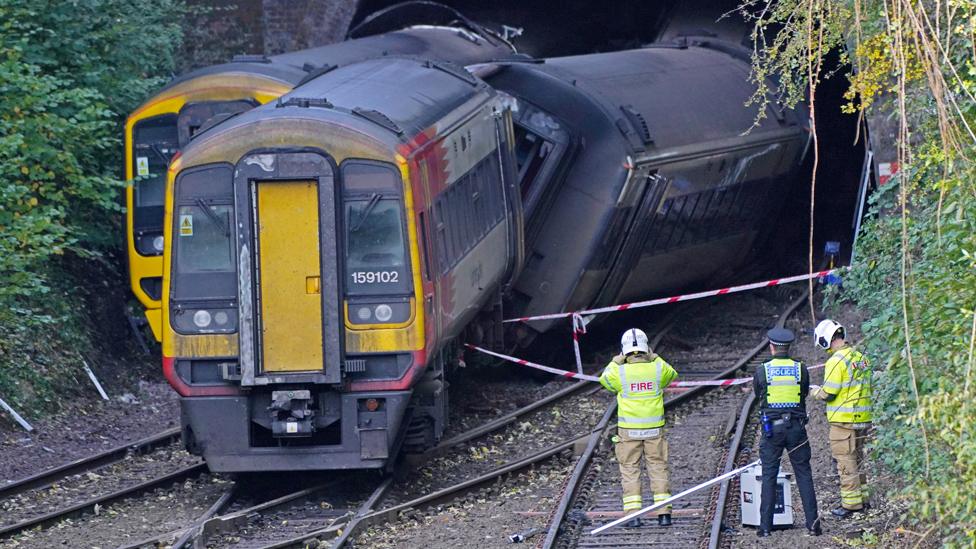
- Published1 November 2021
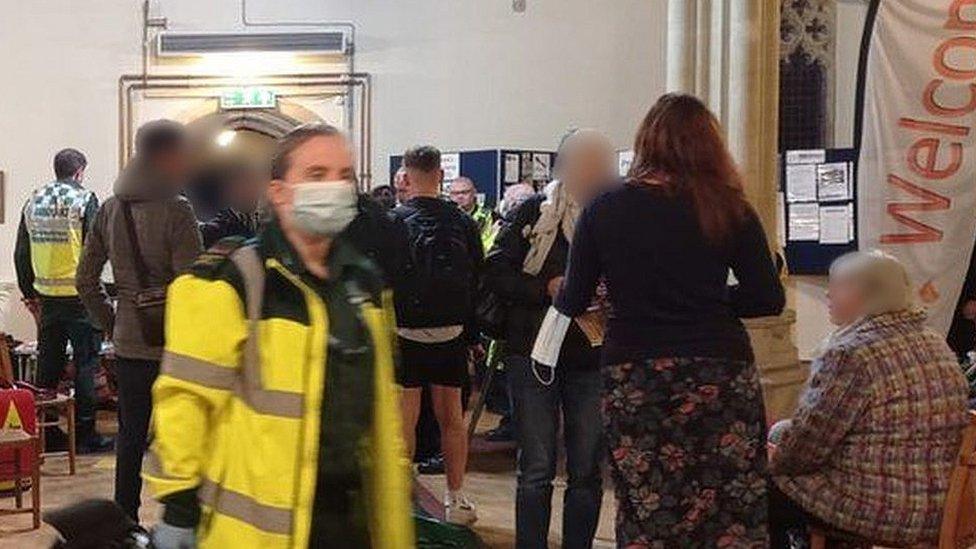
- Published31 October 2021
